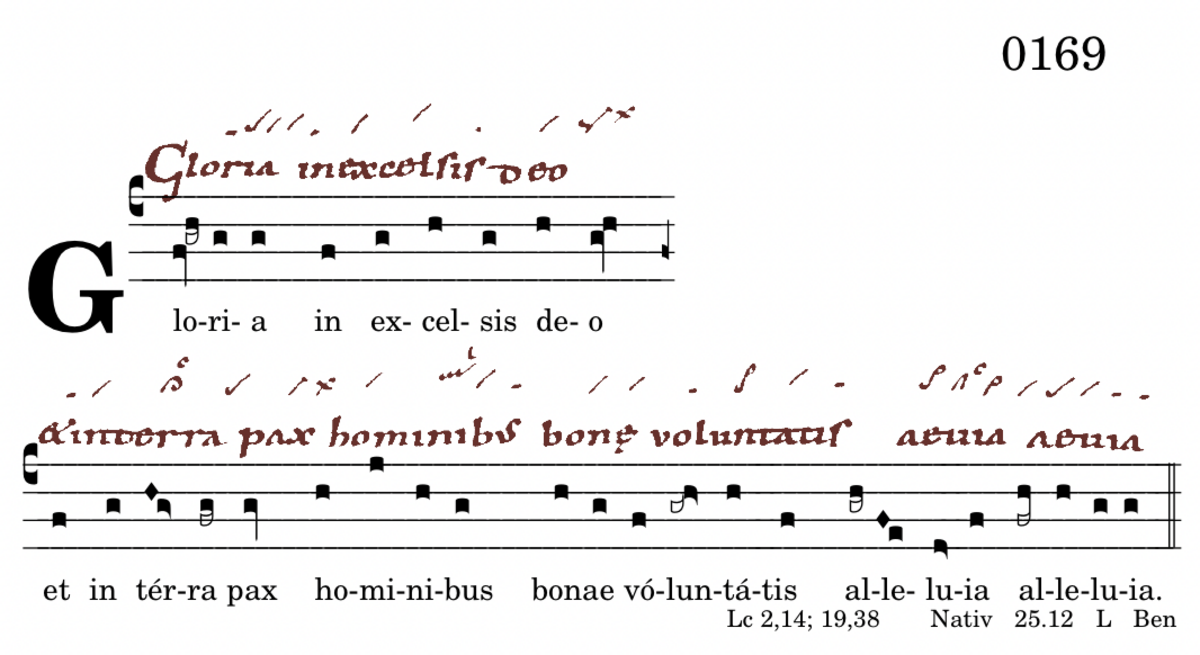🔘 IN GR TR AL OF CO xxxxx 1️⃣ 2️⃣ 0️⃣ 3️⃣ 4️⃣ 5️⃣ 6️⃣ 7️⃣ ✅ xxxxx AN RP IV alia
0169 AN Gloria in excelsisModus 8
INC ad1
8MED cad
8TER de la
8TER katab +
fml_supra
Eine geniale Komposition: Die beiden exspectare gliedern den Text so:
„Gloria in excelsis deo /x et in terra pax /x hominibus bonae voluntatis alleluia alleluia.“
Der Melodieverlauf gliedert etwas anders:
„Gloria in excelsis deo /: et in terra pax hominibus bonae voluntatis /. - álleluia alleluia.“ Das „alleluia“ ist bloß nachgestellt.
Höhepunkt (höchster Ton) der Antiphon ist „ho-mí-nibus“.
„et in ter-ra pax“ der kPes macht die Silbe zur Binnensilbe eines PPO: „et in térra pax“
„bonae vóluntátis“Der kPes liqueszens betont die FML alloquium vor und nach dem PseudoTrc.
● Ehre sei Gott in der Höhe
und auf Erden Frieden den Menschen guten Willens, Halleluja, halleluja.
● Glory to God in the highest
and on earth peace to men of good will, alleluia, alleluia.
INC ad1
8MED cad
8TER de la
8TER katab +
fml_supra\
An ingenious composition: the two exspectare divide the text like this:
“Gloria in excelsis deo /x et in terra pax /x hominibus bonae voluntatis alleluia alleluia.”
The melody is structured somewhat differently:
“Gloria in excelsis deo /: et in terra pax hominibus bonae voluntatis /. - álleluia alleluia.” The “alleluia” is merely a postposition.
The climax (highest note) of the antiphon is “ho-mí-nibus”.
“et in ter-ra pax” the kPes makes the syllable the internal syllable of a PPO: “et in térra pax”
“bonae vóluntátis”The kPes liquesces the FML alloquium before and after the pseudoTrc.
